The Ultimate Guide to Glacier National Park
Join us on a journey through this remarkable landscape as we explore its rich history, iconic landmarks, and essential tips for making the most of your visit.
Welcome to Glacier National Park
Welcome to Glacier National Park, a captivating expanse of untouched wilderness that beckons travelers from around the globe. With its soaring peaks, crystalline lakes, and abundant wildlife, Glacier National Park stands as a testament to the raw beauty of nature. Since its establishment in 1910, this iconic park has captivated the imaginations of visitors, offering an escape into a world untouched by time. Join us as we embark on a journey through the wonders of Glacier National Park, where adventure awaits at every turn and the spirit of the wild reigns supreme.
Established in 1910, Glacier National Park encompasses over a million acres of pristine wilderness, with more than 700 miles of hiking trails, scenic drives, and endless opportunities for outdoor exploration. Whether you're seeking thrilling mountain hikes, tranquil lakeside picnics, or simply the chance to reconnect with nature, Glacier National Park has something for everyone.
Join us on a journey through this remarkable landscape as we explore its rich history, iconic landmarks, and essential tips for making the most of your visit. From the awe-inspiring vistas along Going-to-the-Sun Road to the hidden gems of the backcountry, Glacier National Park promises an unforgettable adventure at every turn. So pack your bags, lace up your hiking boots, and get ready to discover the wonders of Glacier National Park—a true wilderness paradise awaiting your exploratio
Table of Contents
"Glacier National Park in Montana is steadfastly considered to be one of the most beautiful places in the country."
Park Overview
Glacier National Park, located in the northwest corner of Montana, is a natural wonderland renowned for its rugged beauty, pristine wilderness, and diverse ecosystems. Spanning over 1 million acres along the northern Rocky Mountains, the park is a UNESCO World Heritage Site and an International Peace Park, sharing a border with Canada's Waterton Lakes National Park.
History
Established in 1910, Glacier National Park holds a rich cultural and geological history. Native American tribes such as the Blackfeet, Salish, and Kootenai have called this land home for centuries, leaving behind a legacy of reverence for the natural world. European explorers and settlers later ventured into the region, drawn by the allure of its towering peaks and abundant wildlife. Today, the park stands as a testament to the enduring spirit of conservation and preservation.
Geographic Features
Glacier National Park boasts an impressive array of natural features, including over 130 named lakes, more than 700 miles of hiking trails, and towering peaks that soar to heights of over 10,000 feet. The park is characterized by its rugged mountain terrain, deep valleys carved by ancient glaciers, and dense forests teeming with wildlife. Glacial activity has sculpted the landscape over thousands of years, leaving behind iconic features such as U-shaped valleys, cirque basins, and stunning alpine lakes.
Ecosystems
Glacier National Park is home to a remarkable diversity of ecosystems, ranging from subalpine meadows and dense coniferous forests to alpine tundra and glacially-carved valleys. These varied habitats support a wide array of plant and animal species, including grizzly bears, mountain goats, bighorn sheep, and elusive species like the wolverine and lynx. The park's pristine lakes and rivers also provide critical habitat for native fish species such as bull trout and westslope cutthroat trout.
Visitor Experience
Whether you're a seasoned outdoor enthusiast or a first-time visitor, Glacier National Park offers endless opportunities for exploration and adventure. From scenic drives along the iconic Going-to-the-Sun Road to exhilarating hikes to hidden waterfalls and panoramic viewpoints, there's something for everyone to enjoy. Ranger-led programs, guided tours, and interpretive exhibits provide valuable insights into the park's natural and cultural history, ensuring a memorable experience for visitors of all ages.
As you prepare to embark on your journey into Glacier National Park, take a moment to marvel at the sheer beauty and diversity of this remarkable wilderness destination. From its towering peaks to its tranquil valleys, Glacier National Park invites you to discover the magic of the natural world and forge a deeper connection with the land and its inhabitants.
Getting There

Directions from Nearby Airports
Glacier National Park is served by several nearby airports, providing convenient access for travelers from afar. The closest airport to the park is Glacier Park International Airport (FCA), located approximately 30 miles away in Kalispell, Montana. From the airport, visitors can rent a car or utilize shuttle services to reach the park.
Other nearby airports include Missoula International Airport (MSO), located about 150 miles south of the park, and Great Falls International Airport (GTF), situated roughly 200 miles east of the park. Both airports offer rental car services and shuttle options for travelers seeking alternative routes to Glacier National Park.
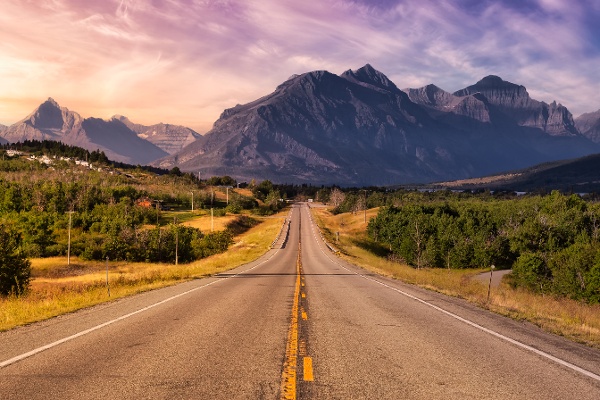
Tips for Driving to the Park
If traveling by car, there are several scenic routes to consider when driving to Glacier National Park. From the west, visitors can take Highway 2, also known as the Flathead Valley, which offers stunning views of the surrounding mountains and forests. Travelers coming from the east can take Highway 2 or Highway 89, both of which provide access to the park's eastern entrances.
It's important to note that road conditions can vary depending on the season, with some roads closed during the winter months due to snowfall. Visitors are advised to check road conditions and weather forecasts before embarking on their journey to Glacier National Park.
Pro Tip Geysers to Glaciers
If you're planning a multi-park adventure encompassing both Yellowstone and Glacier National Parks, flying into Bozeman Yellowstone International Airport (BZN) can be a strategic starting point. From Bozeman, visitors can explore the wonders of Yellowstone National Park before embarking on a scenic drive to Glacier National Park.
Consider flying into Bozeman and spending a few days exploring the geysers, hot springs, and wildlife of Yellowstone National Park. Afterward, rent a car and embark on a picturesque drive northward to Glacier National Park. This route offers a diverse array of landscapes, from the geothermal wonders of Yellowstone to the rugged mountains and pristine lakes of Glacier.
Upon reaching Glacier National Park, visitors can immerse themselves in the park's breathtaking scenery and embark on a variety of outdoor adventures, from hiking and wildlife viewing to scenic drives along the famed Going-to-the-Sun Road.
When planning your trip, be sure to book a rental car with flexible drop-off options, allowing you to return the vehicle in Kalispell or another nearby airport for your departure. This itinerary provides an opportunity to experience two of America's most iconic national parks in a single unforgettable journey.
Glacier National Park Blogs
Best Time to Visit
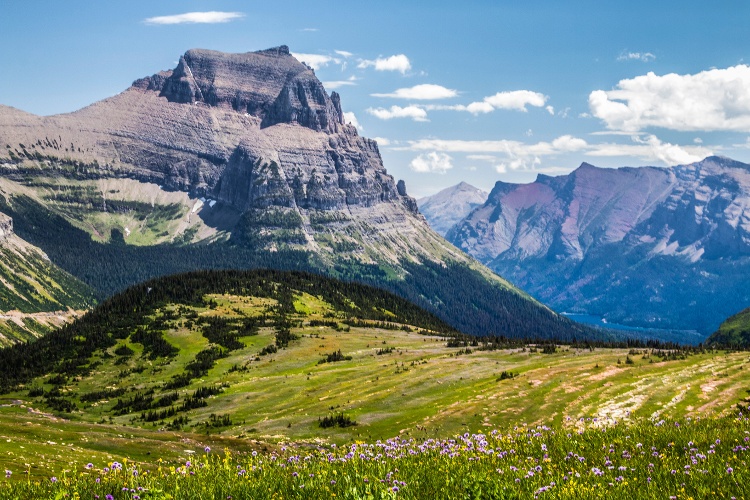
Summer
June - August
Pros
Summer is the peak season for visiting Glacier National Park, offering long days, mild temperatures, and a wide range of outdoor activities. The iconic Going-to-the-Sun Road is fully open, providing access to some of the park's most breathtaking vistas and scenic viewpoints. Hiking trails are snow-free, wildflowers are in bloom, and wildlife sightings are abundant.
Cons
With pleasant weather comes larger crowds, especially in popular areas like Logan Pass and Many Glacier. Campgrounds and accommodations fill up quickly, requiring advanced reservations. Additionally, afternoon thunderstorms are common, so it's essential to be prepared for sudden changes in weather.
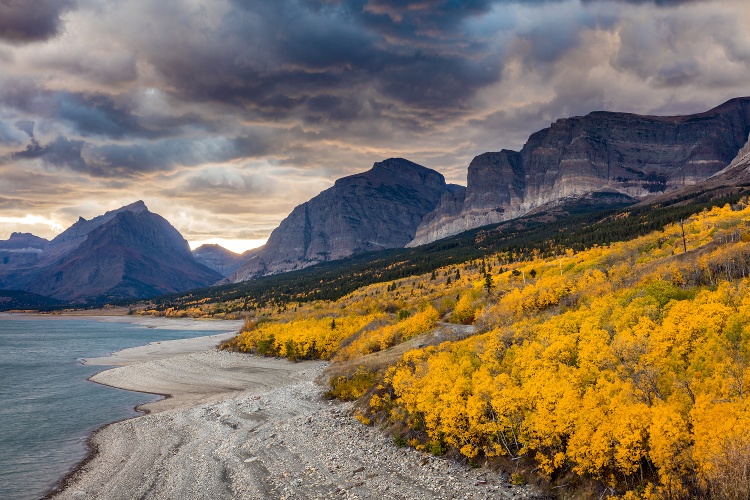
Fall
September - October
Pros
Fall offers cooler temperatures, vibrant foliage, and fewer crowds compared to the summer months. The autumn landscape transforms into a tapestry of gold, red, and orange hues, creating stunning photo opportunities throughout the park. Wildlife activity increases as animals prepare for winter, making it an excellent time for wildlife viewing.
Cons
Some facilities and services may begin to close for the season, and weather conditions can be unpredictable, with occasional snowfall at higher elevations. Visitors should be prepared for cooler temperatures and the possibility of road closures due to inclement weather.
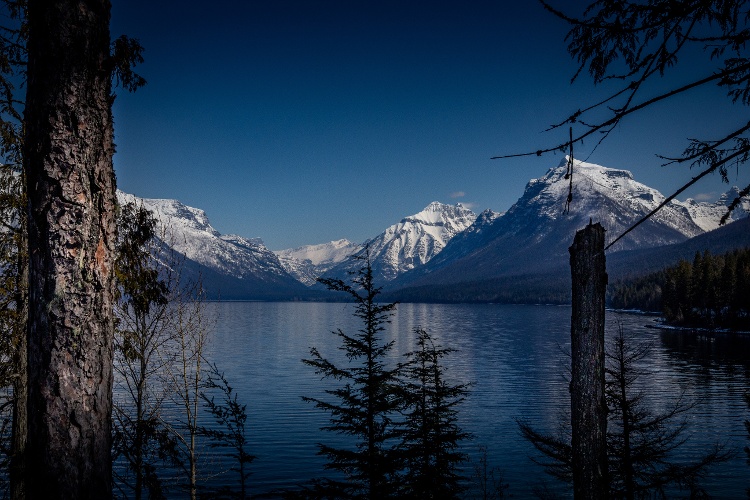
Winter
November - March
Pros
Winter in Glacier National Park offers a serene and enchanting landscape blanketed in snow. Cross-country skiing, snowshoeing, and snowmobiling opportunities abound, providing a unique way to explore the park's winter wonderland. With fewer visitors, winter offers a sense of solitude and tranquility not found during other seasons.
Cons
Many park facilities and services are closed during the winter months, including most campgrounds and visitor centers. Road closures are common, limiting access to certain areas of the park. Winter weather conditions can be harsh and unpredictable, requiring appropriate gear and precautions for outdoor activities.
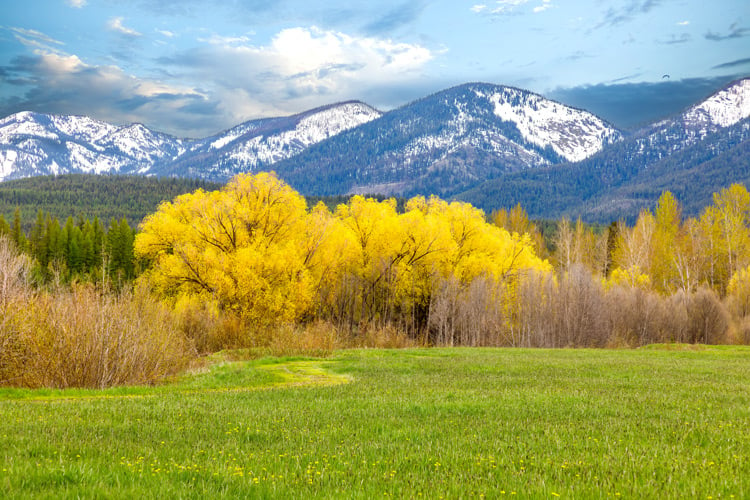
Spring
April - May
Pros
Spring marks the transition from winter to summer, with melting snow creating rushing waterfalls and swollen streams. Wildflowers begin to bloom, and wildlife becomes more active as the park awakens from its winter slumber. Trails gradually open up as snow levels recede, offering opportunities for early-season hiking and exploring.
Cons
Spring weather can be variable, with fluctuating temperatures and the possibility of late-season snowstorms. Some park roads and facilities may still be closed or inaccessible due to lingering snow and ice. Visitors should check current conditions and be prepared for rapidly changing weather patterns.
Ultimately, the best time to visit Glacier National Park depends on your personal preferences and interests. Whether you're seeking summer adventures, fall foliage, winter solitude, or spring blossoms, Glacier National Park offers a captivating experience year-round for nature lovers and outdoor enthusiasts alike.
Accommodations
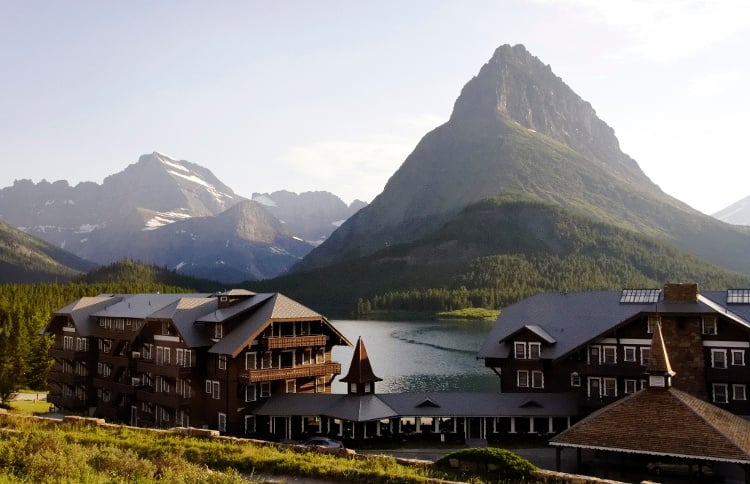
Lodges within the Park
Many Glacier Hotel
Situated on the shores of Swiftcurrent Lake, Many Glacier Hotel is a historic Swiss-style chalet known for its stunning alpine views and Old-World charm. Guests can choose from a range of accommodations, including lakefront rooms and cozy cabins, and enjoy amenities such as fine dining, guided hikes, and boat tours.
Lake McDonald Lodge
Nestled on the shores of Lake McDonald, this iconic lodge offers rustic elegance and breathtaking lake views. Guests can stay in historic lodge rooms or modern cottages and enjoy amenities such as dining, boat rentals, and ranger-led programs.
Swiftcurrent Motor Inn & Cabins
Located in the heart of Many Glacier Valley, Swiftcurrent Motor Inn & Cabins offers affordable accommodations in a spectacular mountain setting. Guests can choose from motel-style rooms or rustic cabins and enjoy easy access to hiking trails, wildlife viewing, and ranger programs.
Recommended Campground Options
Apgar Campground
Situated near the west entrance of the park, Apgar Campground offers tent and RV camping in a wooded setting along the shores of Lake McDonald. Amenities include restrooms, showers, and a camp store, as well as easy access to hiking trails and visitor services.
Many Glacier Campground
Located in the scenic Many Glacier Valley, this campground offers tent and RV camping with stunning views of the surrounding mountains. Amenities include restrooms, potable water, and access to hiking trails and boat tours on Swiftcurrent Lake.
Nearby Hotels & Lodges
Glacier Park Lodge (East Glacier)
Just outside the park's eastern entrance, Glacier Park Lodge offers historic accommodations in a grand lodge setting. Guests can stay in lodge rooms or modern cabins and enjoy amenities such as dining, a golf course, and horseback riding.
Whitefish Mountain Resort
Located just a short drive from the park's west entrance, Whitefish Mountain Resort offers a range of lodging options, including hotels, condos, and vacation rentals. Guests can enjoy amenities such as skiing, mountain biking, and scenic lift rides during the summer months.
Reservation Tips
Whether you're seeking a cozy cabin retreat, a backcountry camping adventure, or a luxurious lodge experience, Glacier National Park offers a range of accommodations to suit every style and budget. Plan ahead, book early, and get ready to enjoy the beauty and splendor of one of America's most iconic national parks.

